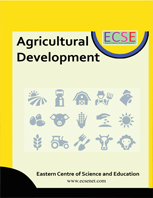Medicinal Plants and their Applications in Poultry Production: A Review
DOI:
https://doi.org/10.55220/25766740.v10i4.395Keywords:
Antimicrobial, Antibiotics, Food safety, Poultry, Production, Phytochemicals.Abstract
The presence of phytochemicals cannot be separated from medicinal plants; this is because they are active compounds that enable them to perform pharmacological or therapeutic activities in the bodies of animals. These compounds include flavonoids, phenols, tannins, terpenoids, alkaloids, and saponins, which have anti-inflammatory, antioxidant, anti-helminthic, anti-diabetic, anti-cancer, antifungal, antiviral, cytotoxic, and immune-stimulatory properties, among others. Phytochemicals are natural compounds, chemical-free, non-toxic, effective, and eco-friendly. Their concentrations in plants can be influenced by the age of the plant, species, geographical location, processing methods, and parts of the plants used. However, it is incorrect to assume that dietary supplementation of medicinal plants cannot be harmful to animals, especially when administered above the optimum level. Therefore, the essence of this review is to identify some of the medicinal plants that have been used to feed animals and to also identify their optimum levels. This will further help to address the increasing cases of antimicrobial resistance that have become a global threat and will also help to promote poultry production and food safety.






